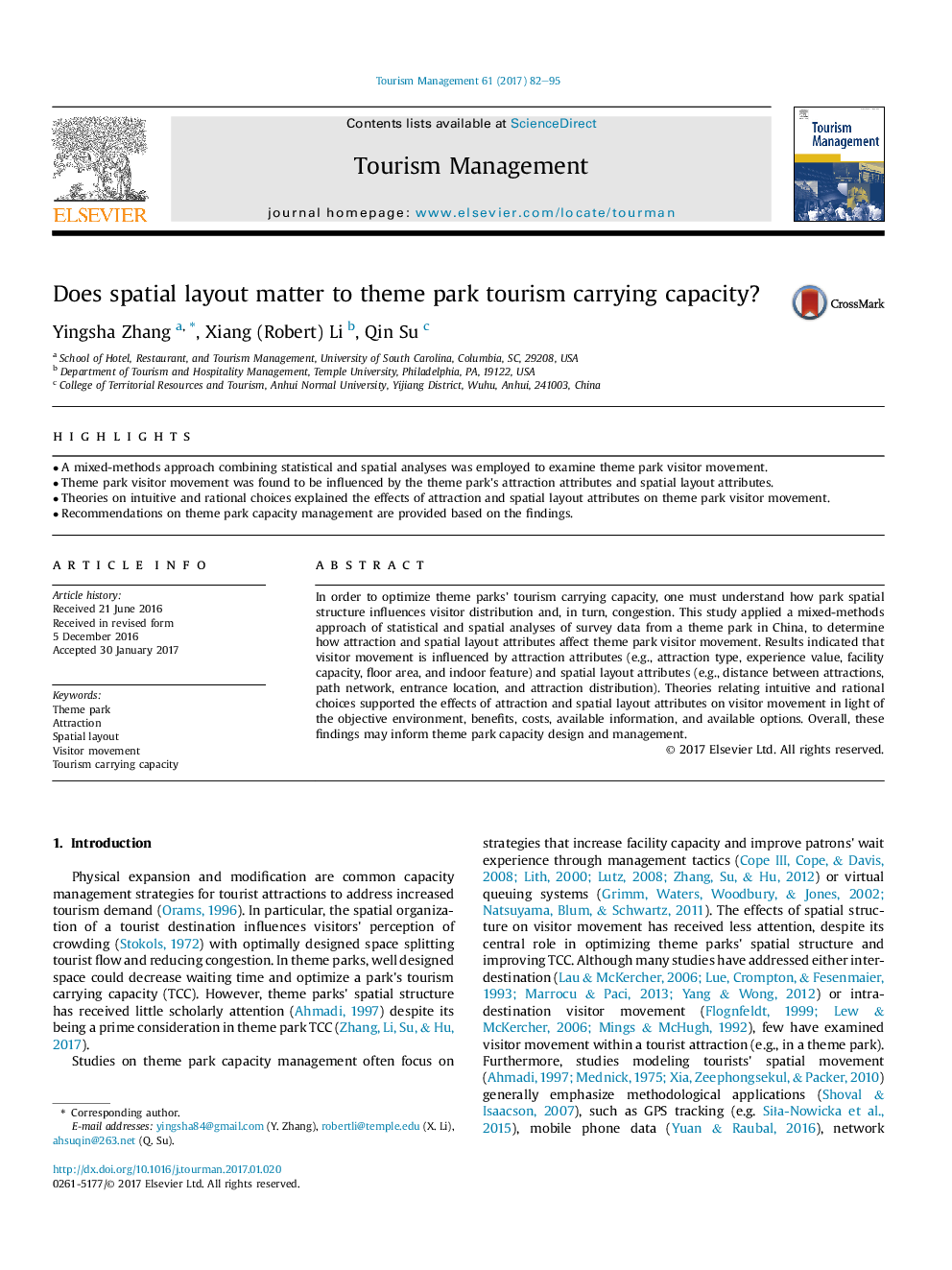| Article ID | Journal | Published Year | Pages | File Type |
|---|---|---|---|---|
| 5108478 | Tourism Management | 2017 | 14 Pages |
Abstract
In order to optimize theme parks' tourism carrying capacity, one must understand how park spatial structure influences visitor distribution and, in turn, congestion. This study applied a mixed-methods approach of statistical and spatial analyses of survey data from a theme park in China, to determine how attraction and spatial layout attributes affect theme park visitor movement. Results indicated that visitor movement is influenced by attraction attributes (e.g., attraction type, experience value, facility capacity, floor area, and indoor feature) and spatial layout attributes (e.g., distance between attractions, path network, entrance location, and attraction distribution). Theories relating intuitive and rational choices supported the effects of attraction and spatial layout attributes on visitor movement in light of the objective environment, benefits, costs, available information, and available options. Overall, these findings may inform theme park capacity design and management.
Related Topics
Social Sciences and Humanities
Business, Management and Accounting
Strategy and Management
Authors
Yingsha Zhang, Xiang (Robert) Li, Qin Su,
